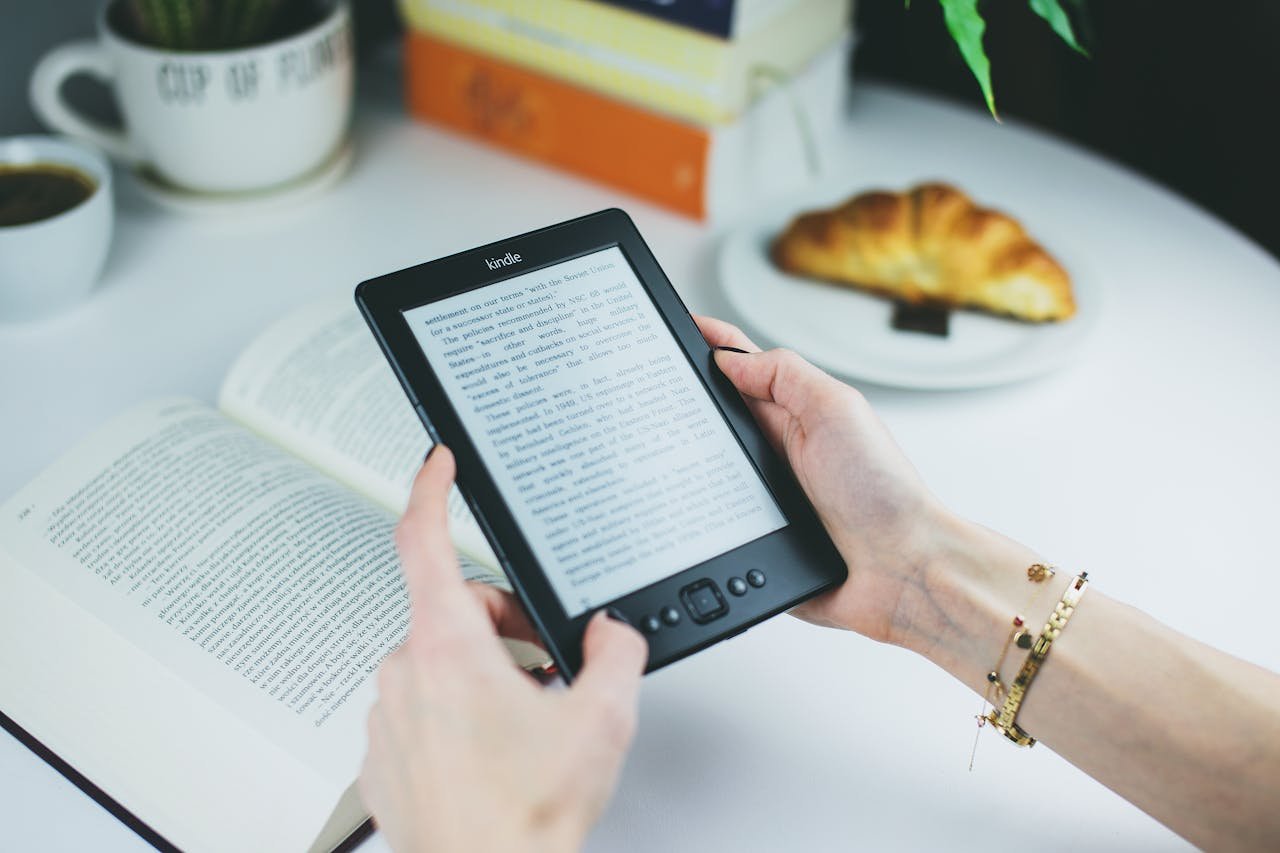In the age of digital convenience, the battle between Kindle and physical books rages on.
For speed readers, the stakes are even higher: does the sleek efficiency of e-readers outpace the tactile benefits of paper?
This article dissects the pros and cons of each format, examining speed, comprehension, retention, and usability to help you decide which medium best fuels your reading goals.
The Case for Kindle: Digital Advantages for Speed
1. Adjustable Text and Layout
- Custom Fonts/Sizes: Tailor text to reduce eye strain and widen peripheral vision (e.g., larger fonts for faster chunking).
- Line Spacing: Minimize subvocalization by optimizing spacing for smoother eye movement.
- Dark Mode: Reduce glare during late-night reading sessions.
Study Insight:
A 2023 Journal of Vision study found that adjustable digital text improved reading speeds by 15% compared to fixed print.
2. Built-In Speed Reading Tools
- Word Runner (Kindle Feature): Displays words one at a time in a fixed position, training RSVP (Rapid Serial Visual Presentation) skills.
- Integration with Apps: Use tools like Spritz or ReadMe! to convert Kindle books into speed-reading formats.
3. Portability and Searchability
- Carry Thousands of Books: Ideal for travelers or students juggling multiple texts.
- Instant Search/Dictionary: Highlight a word for instant definitions, saving time vs. physical dictionary use.
4. Distraction-Free Customization
- Focus Mode: Disables notifications and ads during reading.
- E-Ink Display: Mimics paper, reducing eye fatigue compared to tablets/phones.
The Case for Physical Books: Analog Benefits for Depth
1. Spatial Memory and Navigation
- Tactile Landmarks: Flipping pages and visualizing locations aids recall. A 2021 Memory & Cognition study found physical book readers retained 20% more plot details.
- Quick Skimming: Physically thumbing through sections is faster for some than digital scrolling.
2. Reduced Eye Strain
- No Blue Light: Paper eliminates screen-related fatigue, ideal for marathon reading sessions.
- Natural Lighting: No glare or backlight adjustments needed.
3. Fewer Distractions
- No Notifications: Unlike Kindles connected to Wi-Fi, physical books offer 100% focus.
- Immersion: The tactile experience—smell, texture—boosts engagement for many readers.
4. Comprehension and Retention
- Deeper Processing: Writing notes in margins reinforces memory. A 2022 Educational Psychology Review linked handwritten annotations to 30% higher retention.
- Pacing Control: Some readers absorb dense material better at a slower, paper-bound pace.
User Testimonial From Our Community:
“I speed read fiction on Kindle but use physical textbooks for exams—the spatial cues stick.” —James, medical student.
Head-to-Head Comparison: Key Factors
| Factor | Kindle | Physical Books |
|---|---|---|
| Speed | ✅ RSVP tools, adjustable text | ❌ Manual page-turning slows pace |
| Comprehension | ⚠️ Mixed (depends on tools) | ✅ Higher for complex texts |
| Retention | ⚠️ Screen fatigue may hinder | ✅ Tactile cues boost recall |
| Portability | ✅ Lightweight, massive library | ❌ Bulky, limited to 1–2 books |
| Eye Strain | ⚠️ E-ink helps, but still a screen | ✅ Zero blue light |
| Distractions | ⚠️ Wi-Fi temptations | ✅ Pure focus |
| Cost | ⚠️ Initial device cost | ✅ No tech investment |
Expert Opinions: When to Choose Which
1. Choose Kindle If…
- You prioritize sheer speed and love tech-driven tools (e.g., Word Runner).
- You read mostly nonfiction/light fiction where retention isn’t critical.
- You’re a traveler or student needing a portable library.
2. Choose Physical Books If…
- You’re reading dense, technical, or literary material requiring deep retention.
- You’re prone to digital distractions or eye strain.
- You value tactile engagement and spatial memory.
Hybrid Approach: Best of Both Worlds
Many speed readers mix formats based on content:
- Kindle: News, blogs, and casual fiction.
- Physical Books: Textbooks, research papers, and classics.
- Pro Tip: Use a physical notebook to jot takeaways from Kindle reads, bridging the retention gap.
The Verdict
Kindle wins for speed and convenience, offering tools that push WPM boundaries. Physical books reign for depth and retention, especially with complex texts. Your choice depends on:
- Content Type: Light vs. dense material.
- Goals: Speed vs. comprehension.
- Lifestyle: On-the-go vs. stationary reading.
Final Recommendation
- Students/Professionals: Use Kindle for research/articles, physical books for textbooks.
- Fiction Lovers: Kindle for speed, physical copies for cherished novels.
- Avid Learners: Invest in both—embrace Kindle’s efficiency but keep physical copies for reference.
Also See: Speed Reading Games

